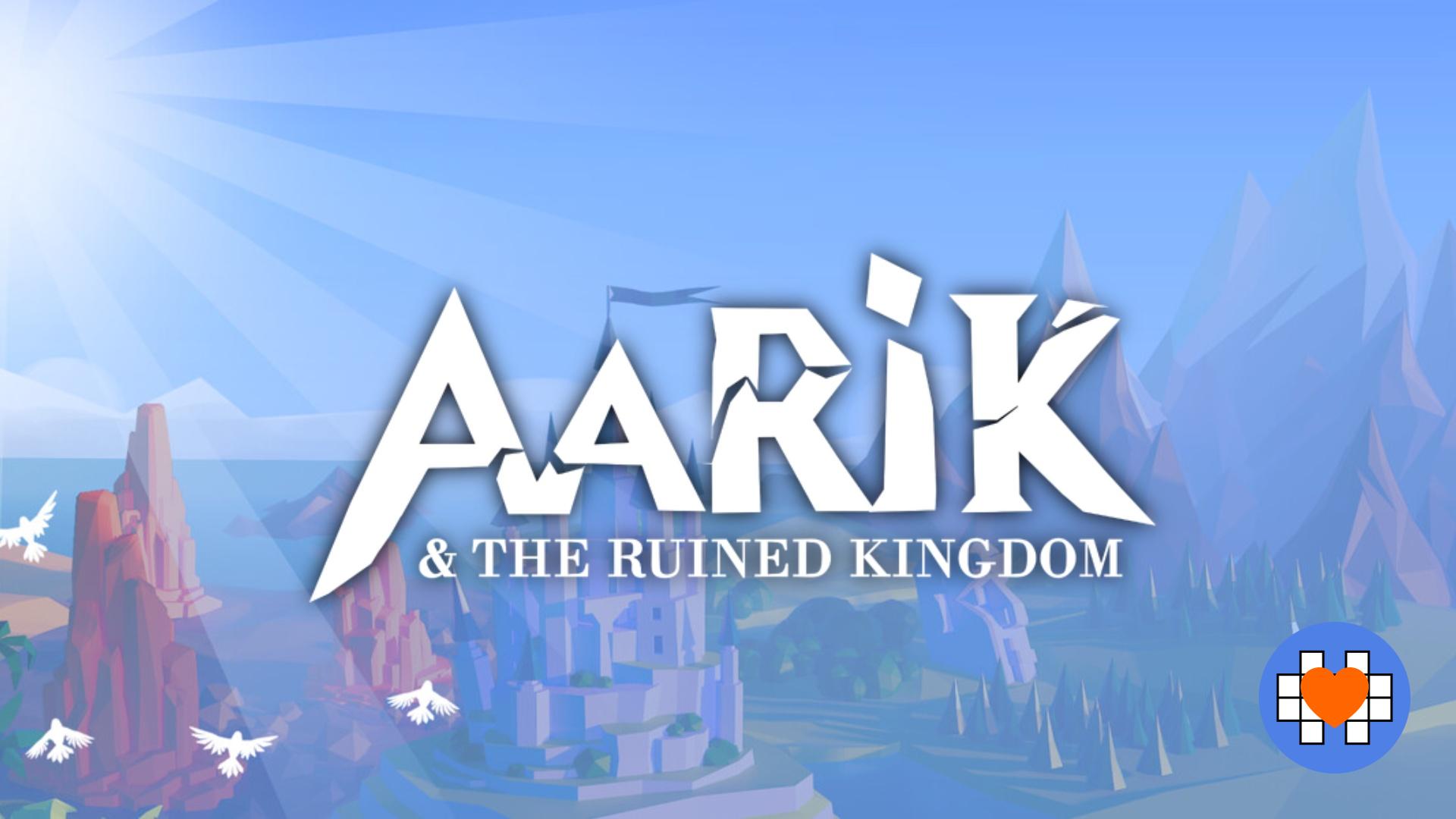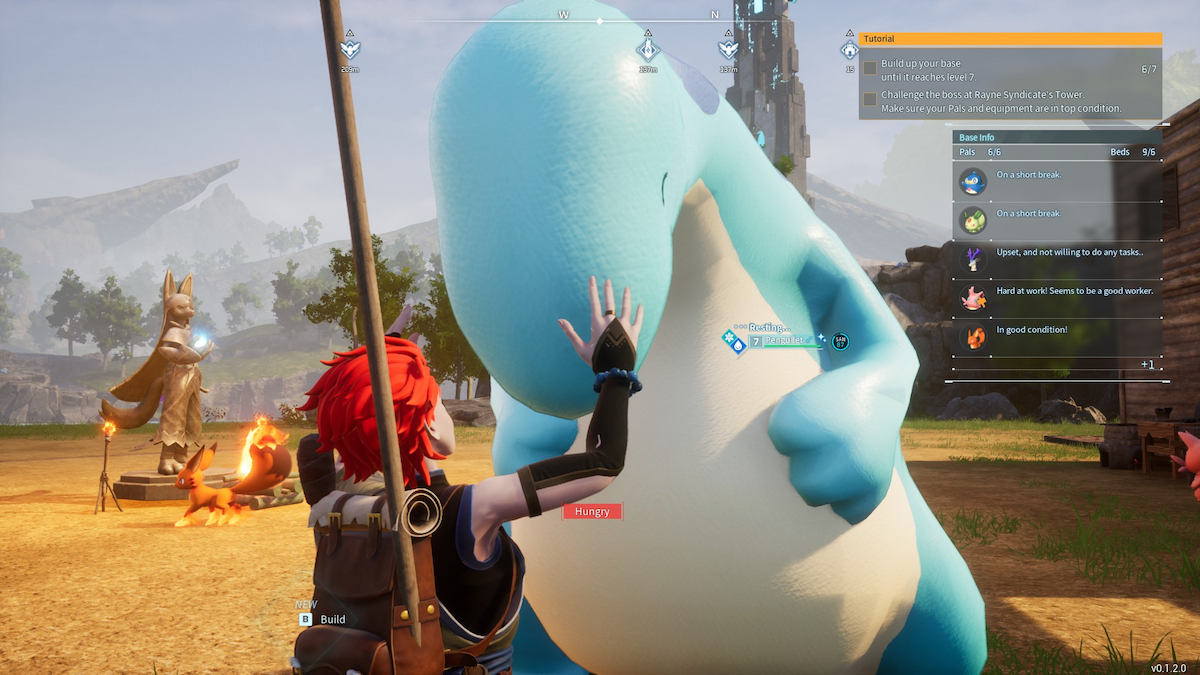Aarik and The Ruined Kingdom is a puzzle game based on solving environmental puzzles and perspective changing. A little fairy tale suitable for everyone.
Shatterproof Games is a UK software house, founded by Richard Kirk, who is Director, Tech Artist and decided to create Aarik and The Ruined Kingdom. The software house focuses its game design philosophy on making the player “think”. Striving to solve a puzzle and the satisfaction that comes from it are also pillars of their philosophy.
This first work seems to embrace this thought making Aarik and The Ruined Kingdom an intelligent title.
The brilliance of the title and its potential were already evident from the demo tested some time ago. Some doubts, how level development and longevity hovered in the air but we couldn’t know without playing the entire title.
Let’s see the strengths and weaknesses of this first work.
The Philosophy of Simplicity
The definitions of Fairy Tale and Fable, although they have substantial differences, have elements that are both found in Aarik and The Ruined Kingdom. The characteristics of the fairy tale that we can find in the game are the brevity of the content, the fantastic and magical element and the use of inanimate and anthropomorphic creatures.
From the fable Aarik and The Ruined Kingdom takes the simplicity of the story and the moral intent.
This last feature is unfortunately not included consistently, even if it is consistent with the philosophy of “simplicity”.
In essence, the protagonist finds himself in an environment that develops in all 3 dimensions. The objective is to reach our destination by using switches and solving environmental puzzles. The level structure seems to take inspiration from puzzle games like Captain Toad: Treasure Tracker. It seems that Shatterproof Games wanted to capture Nintendo’s own game design philosophy.
To all this we add a gameplay that is based on two mechanics. As simple as they are, they work and manage to keep your attention high in the adventure from start to finish. Also thanks to the brevity of the game itself which helps not to tire the player with a long-winded and repetitive narrative and gameplay.



Aarik’s Mechanics
As mentioned before Aarik and The Ruined Kingdom bases its gameplay on 2 mechanics of which the first is the protagonist’s crown. Thanks to it we can rotate the environment and consequently the perspective. It is immediately obvious that the game leverages the player’s lateral thinking. Logically unsolvable paths or puzzles find a solution by changing the approach or point of view. This mechanic is introduced from the first level and will follow us until the end of the adventure.
The other mechanic is the use of gems. Our kingdom is in ruins and we can save it only by setting the gems and their power in the crown that belonged to our father. There are 4 gems that we will gradually obtain in the game. Each gem is associated with a specific biome, once acquired we can use their power to act on the surrounding environment.
The 4 gems are:
The Ruby of Rejuvenation allows us to drag and drop objects, characters and parts of the scenario to open the path.
The Amethyst of Rotation will rotate certain objects in the scenario.
With the Sapphire of Control we will take control of objects and small creatures that will obey our will.
The Emerald of Growth controls both the development of vegetation and the weather. In essence we will be able to manipulate a ruined environment to return it to its original splendor.
The gems are first presented individually, so as to familiarize you with their power. Then we will find ourselves using their abilities together as the levels progress. An interesting mechanic that allows you to think on different levels of thought at the same time.



My Two Cents
Aarik and The Ruined Kingdom is certainly a good puzzle game with an attractive look that aims to embrace the philosophy of a “relaxing” game suitable for everyone. The fairy tale technique works well in this context and the scrolls scattered throughout the levels help keep attention on the story. The narrative side is never neglected, indeed it is embellished with some particular events. On some levels, for example, we will be the Queen, Aarik’s mother, who is also committed to saving the kingdom. At the end of some biomes we encounter what we can define as boss fights or tests to overcome. Obviously overcome through the use of the crown and gems.
Despite the good narrative and gameplay ideas, Aarik and The Ruined Kingdom is not free from flaws. The philosophy of the fairy tale and the short game finds some difficulty in fitting into the gaming environment. As much as the game encourages you to continue one level after another, the brevity of the game is undeniable. Despite its very low cost.
Just over 3 hours to finish it, even collecting the small collectibles scattered throughout the levels. 33 levels distributed in 6 macro biomes, where however the last 2 have a small number of levels. The last one actually contains 2 levels, one of which is the final sequence of the story and is a scripted sequence. Even half the level compared to other competitors of the genre.
I hope that in the future there will be DLC or simply additional levels to increase the longevity of the experience.
Despite some technical flaws, Aarik and The Ruined Kingdom keeps what it promises, a relaxing story that stimulates the player’s lateral thinking and encourages him to continue. Too bad the longevity is really too short.
“Aarik and The Ruined Kingdom is certainly a good puzzle game with an attractive look that aims to embrace the philosophy of a “relaxing” game suitable for everyone. The fairy tale technique works well in this context and the narrative side is never neglected, indeed it is embellished with some particular events. Despite some technical flaws, Aarik and The Ruined Kingdom keeps what it promises, a relaxing story that stimulates the player’s lateral thinking and encourages him to go on. Too bad the longevity is really too short.”
- Good looking graphic
- Clever game mechanics
- Simple but captivating story
- Good level design
- Some technical problems
- Too short despite the low price

7.2/10

